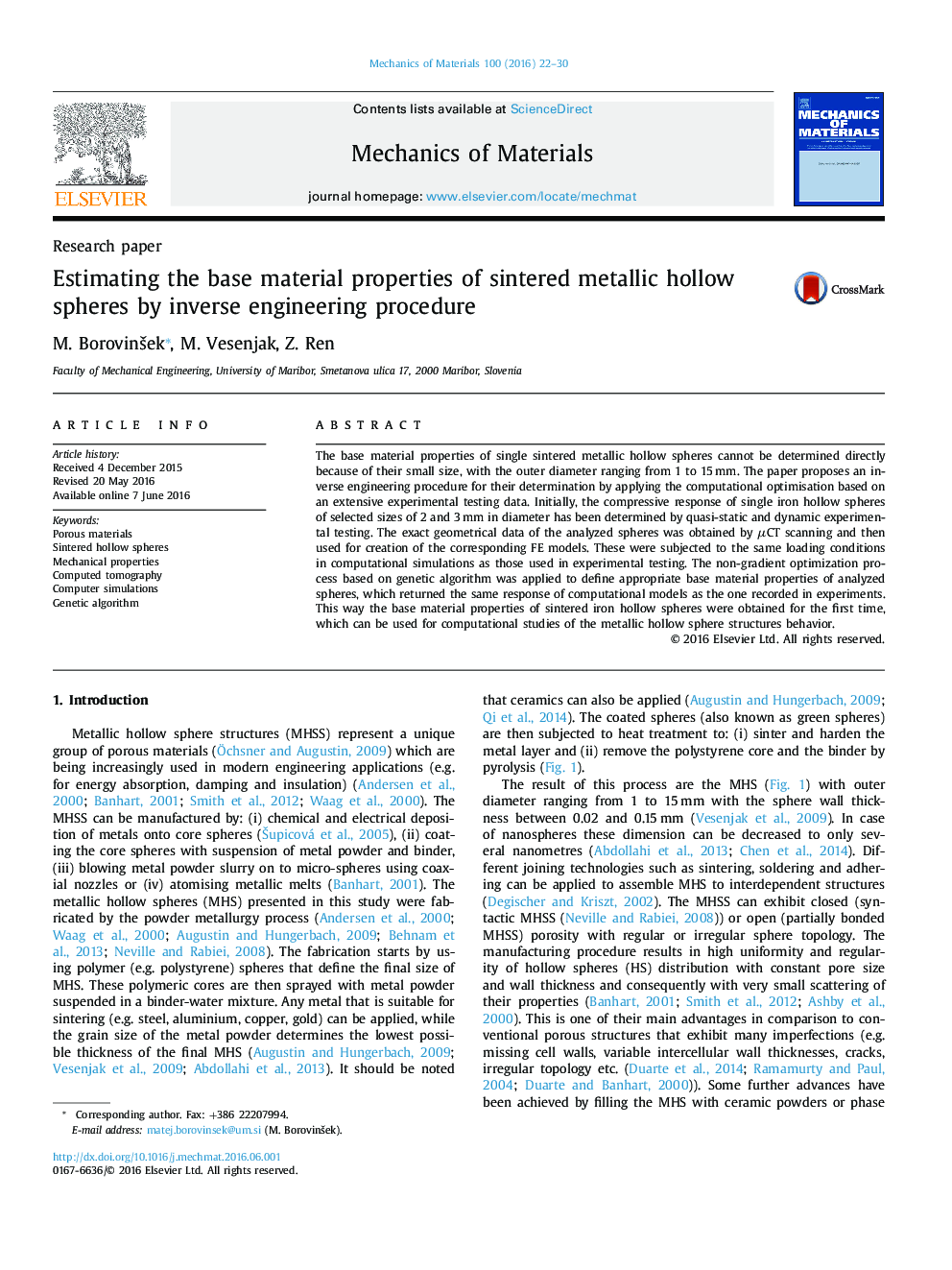| Article ID | Journal | Published Year | Pages | File Type |
|---|---|---|---|---|
| 799511 | Mechanics of Materials | 2016 | 9 Pages |
•Experimental testing of single sintered metallic hollow spheres (MHS) was performed at static and dynamic conditions.•µCT scanning was used to capture average geometry parameters of the MHS which were then used in computer simulations.•Base material properties of the MHS walls were determined using computer simulations and inverse engineering procedure.•Proposed procedure exhibits a good robustness and accuracy of results and can be extended for any given MHS base material.
The base material properties of single sintered metallic hollow spheres cannot be determined directly because of their small size, with the outer diameter ranging from 1 to 15 mm. The paper proposes an inverse engineering procedure for their determination by applying the computational optimisation based on an extensive experimental testing data. Initially, the compressive response of single iron hollow spheres of selected sizes of 2 and 3 mm in diameter has been determined by quasi-static and dynamic experimental testing. The exact geometrical data of the analyzed spheres was obtained by μCT scanning and then used for creation of the corresponding FE models. These were subjected to the same loading conditions in computational simulations as those used in experimental testing. The non-gradient optimization process based on genetic algorithm was applied to define appropriate base material properties of analyzed spheres, which returned the same response of computational models as the one recorded in experiments. This way the base material properties of sintered iron hollow spheres were obtained for the first time, which can be used for computational studies of the metallic hollow sphere structures behavior.
